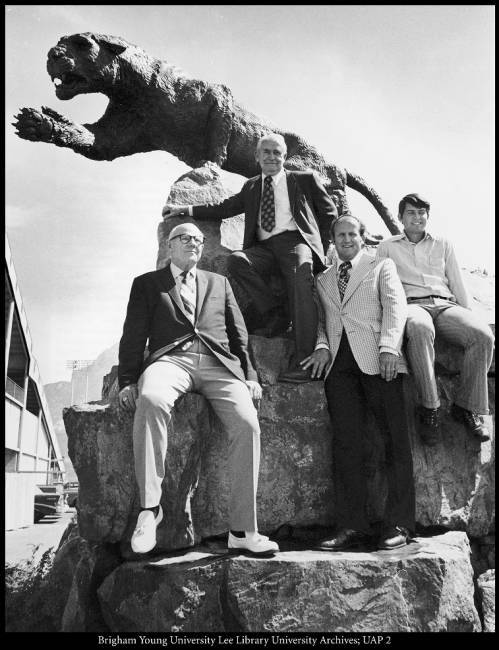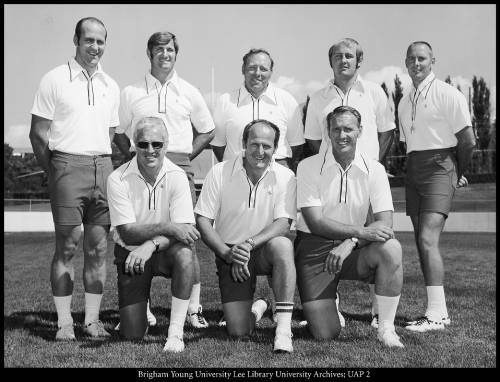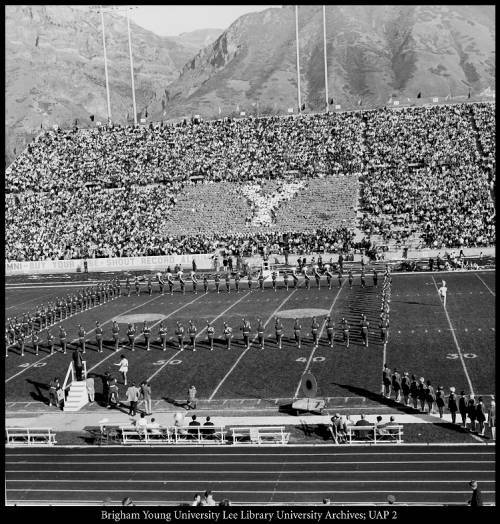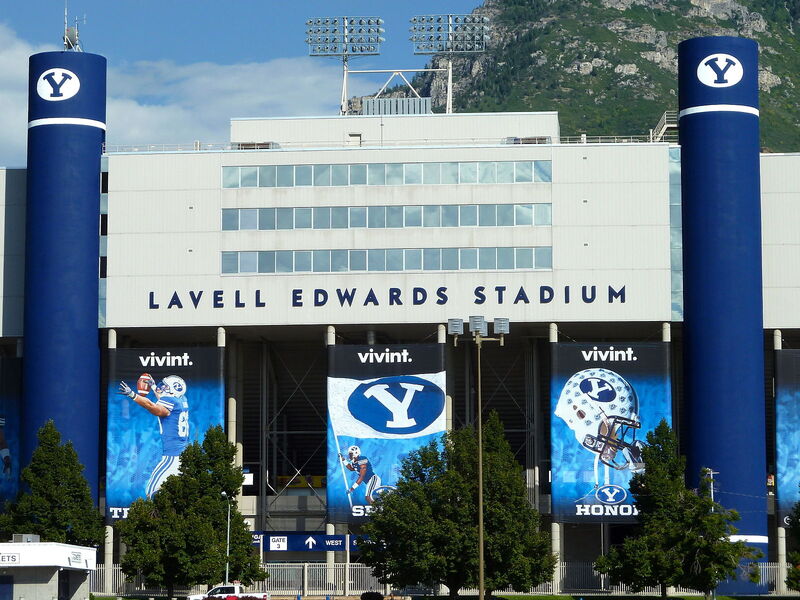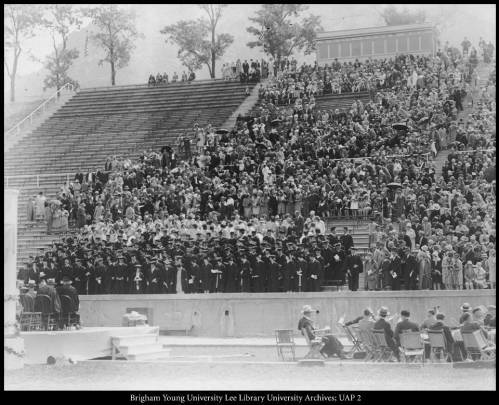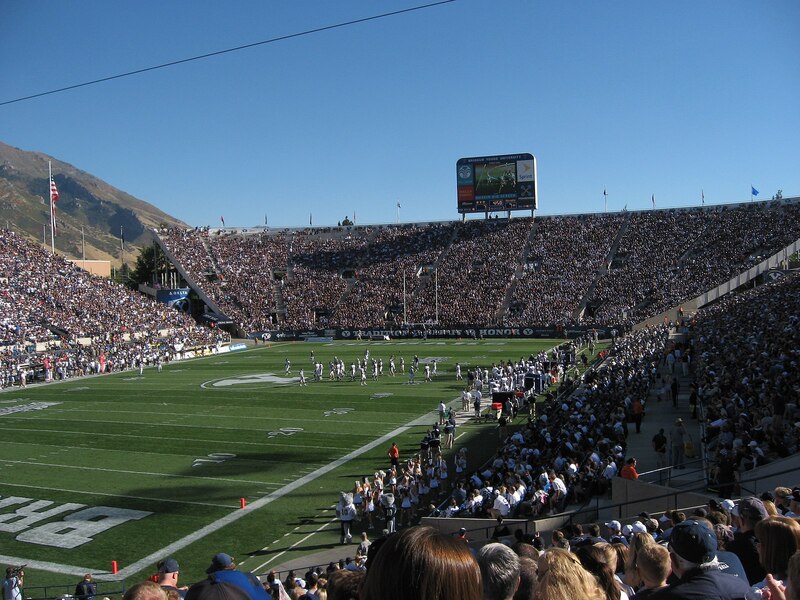The LaVell Edwards Stadium
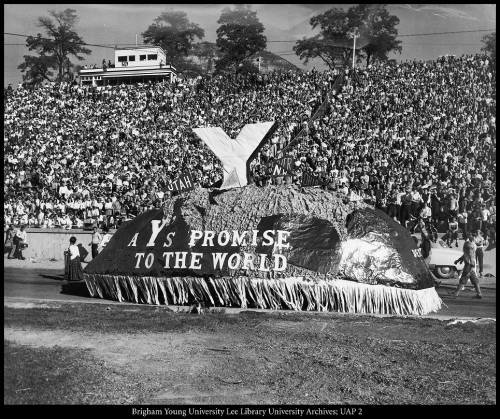
The LaVell Edwards stadium represents the long and varied tradition of football at Brigham Young University. In 2000, the stadium’s name was changed from Cougar Stadium to LaVell Edwards Stadium in honor of BYU’s most beloved coach, LaVell Edwards, who transformed BYU football into what it is today.
Central to any BYU fan's experience is the LaVell Edwards Stadium. Known for its wild student section, referred to as the “ROC,” and Cougar Tails—a 15-inch maple-frosted doughnut—the stadium has become a staple venue for BYU superfans and opponents. The history of football at Brigham Young University has been a series of highs and lows, and so has the fan response. BYU, its students, and its fans have been able to craft BYU football into their own. Through that journey, the Cougar's stadium has been host to it all.
On September 25, 1982, BYU had its first game in the Cougar Stadium, now the LaVell Edwards Stadium, with a crowd of 64,253, which, at the time, was the largest crowd in Utah’s history. However, the history of football at the university goes back to 1896. That season, BYU won against the University of Utah 12-0, which was the start of BYU’s most infamous rivalry. However, just a few years after their first season, in 1899, football was banned at BYU. The sport was violent and dangerous for players, and the death of a player on an opposing team, who was also the son of a prominent member of the Church of Jesus Christ of Latter-day Saints, led to enough backlash and worry that officials prohibited football. The ban lasted until 1919, when reforms of the sport and persuasive arguments by students convinced BYU officials to lift the ban.
Before 1928, games were held at a small stadium where the Joseph Smith Building now stands and seated a few hundred. In 1928, the stadium, dubbed Hillside Stadium, stood where the RB was and seated 10,000. In 1964, expansions were needed and a new stadium, the Cougar Stadium, was built where a fruit orchard had been previously. This is where the stadium remains today. Today, the ROC is known for its boisterous yells and cheers, but around the 1960s and lasting until the 1980s, BYU crowds were the object of jeers for their “restrained and reverent-like” cheering. This later changed through a concerted effort by the Athletic Department and the student body.
The capacity was 35,000, but after the 1981 season, which averaged a capacity of over 40,000 spectators per game, efforts were made to raise funds for a $12 million expansion. The funds were raised solely through donations, per the Board of Trustees’ request. Neighbors of the stadium filed a suit against the construction and its impending consequences for noise and view. Nevertheless, that same year, expansions were completed in time to welcome the 1982 season. Tragically, during expansions in 1982, Brent Christensen, 28, was working on the construction and lost his footing near the south end zone and fell 35-feet, passing away shortly thereafter at a local hospital.
The stadium was built for football games, but has also been host to other activities. Other than football games, in 1989, the stadium was host of a world-record attempt to set off one million firecrackers in two minutes, which drew quite a response, but was unsuccessful. In 2000, the stadium was the location of a service day sponsored by the General Relief Society which expected 20,000 women. Red cross blood donations, which expected the most blood donations in a single activity, quilting, food sorting for the Utah Food Bank, hygiene kits, and sewing caps for cancer patients were just a few of the activities available.
In 2000, at the beginning of LaVell Edwards’ last game, Gordon B. Hinckley announced that Brigham Young University would be renaming the Cougar Stadium to the LaVell Edwards Stadium, in honor of the coach who transformed BYU football. In 1972, LaVell Edwards was promoted to head coach from defensive coach. Before then, BYU had a mediocre team and program, and many thought that Edwards was a transitional figure who would soon move on to another college. Instead, Coach Edwards transformed the team into a winning machine. In the 29 seasons Edwards was there, he had only one losing season. He took BYU to 22 bowls and won ten straight WAC championship. This included the “Miracle Bowl” in the 1980 Holiday Bowl where BYU took home an unlikely win. LaVell Edwards crafted the “West Coast Offense,” which relied heavily on passing, a novel plan at the time. Edwards is the sixth all-time winningest coach in college football. His legacy now lives on through BYU football and the LaVell Edwards stadium. Each fall, thousands crowd into the stadium to cheer on BYU and its players.
Images

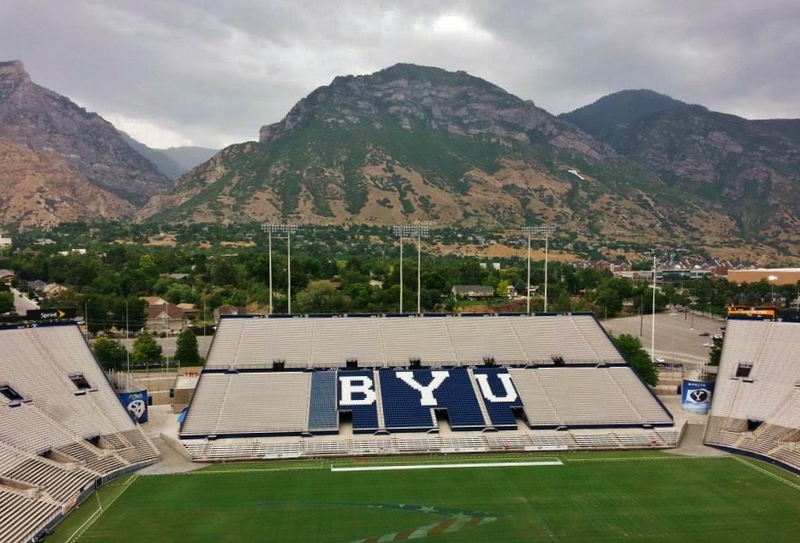
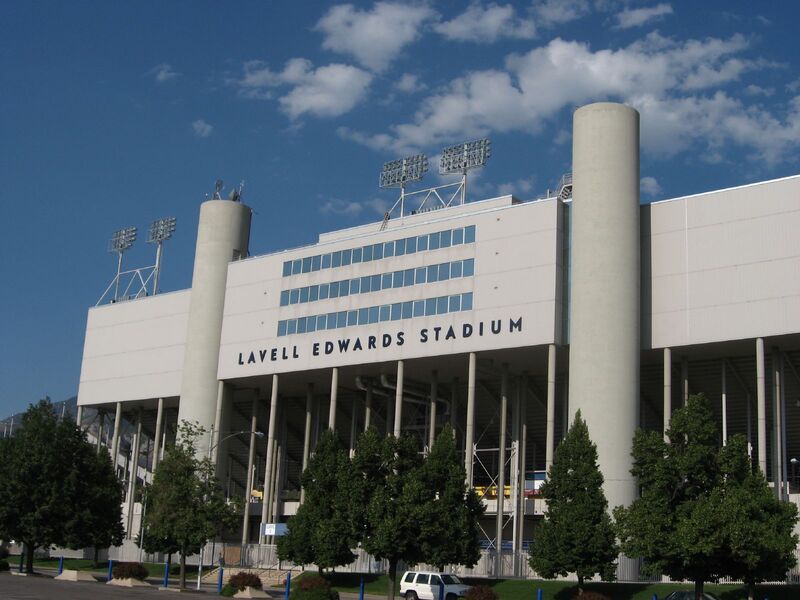
“Lavell Edwards Stadium.” Ken Lund. August 14, 2007. Via Wikimedia Commons. https://commons.wikimedia.org/wiki/File:Lavell_Edwards_Stadium.jpg
